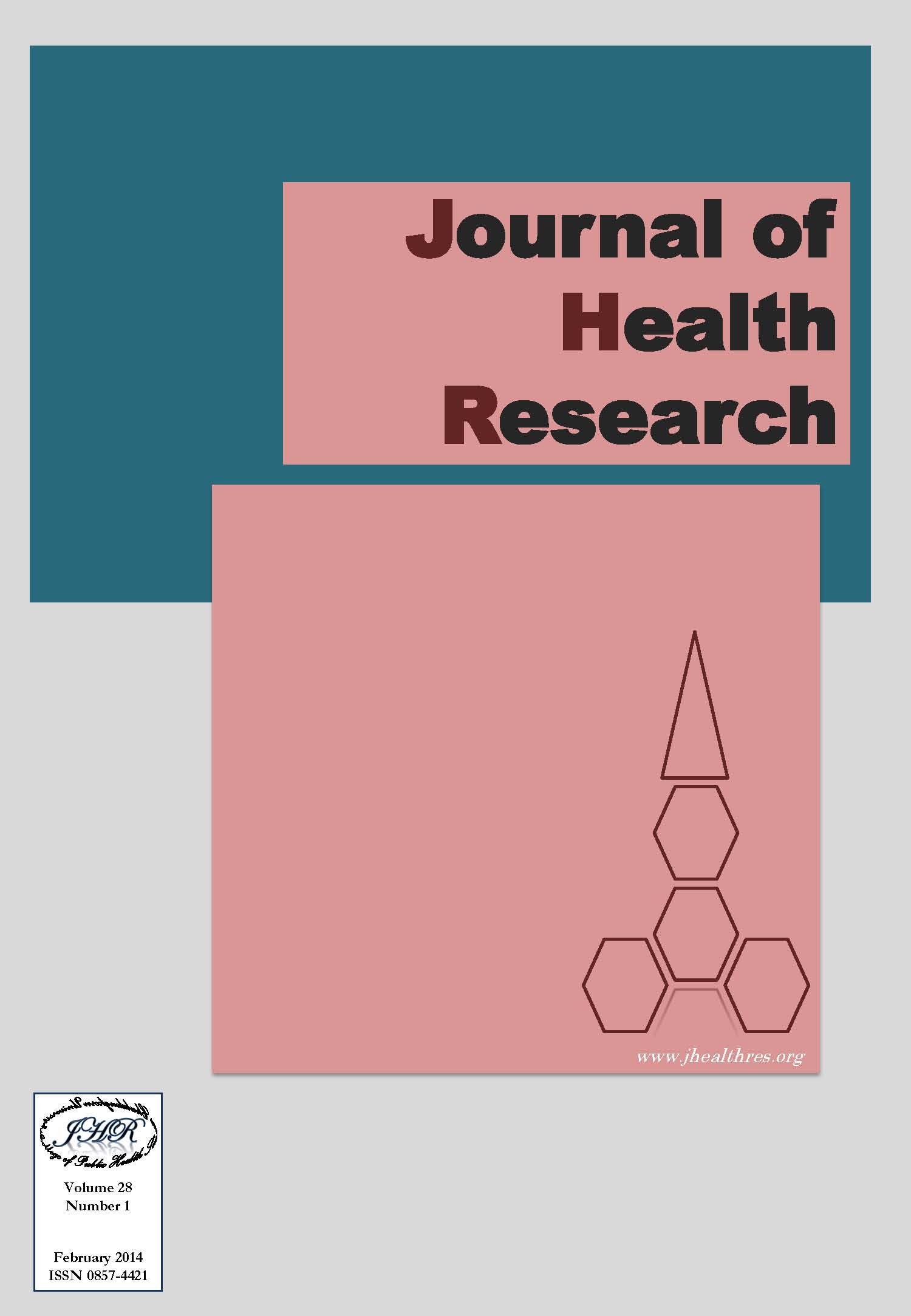Stroke Incidences and Related Factors among Employees Working at the Central Office of the Electricity Generating Authority of Thailand (EGAT): a Prospective-Descriptive Study
Keywords:
Stroke incidence, related factors, Electricity Generating Authority of Thailand, EmployeeAbstract
Several studies in Thailand, mostly hospital-based, have assessed the prevalence of stroke and its related factors. We reported the incidence rate of stroke and the distribution of related factors among the community-based cohort of the employees of the Electricity Generating Authority of Thailand (EGAT) who were working at the central office in Nonthaburi, a neighboring province of Bangkok. This prospective-descriptive study was done by using database of 3,360 EGAT’s employees, 39,564 person-years of follow up, who enrolled in the Ramathibodi Hospital's cardiovascular disease project during from 1985 to 1997. Data were collected by questionnaire interviews and reviews of physical examination records, laboratory and brain imaging reports, as well as death certificates. The study revealed that the median age of the participants was 42 years old, 77.2% male. The prevalence of hypertension and diabetes were 19.5% and 2.7 %. About 27.3% of the participants had dyslipidemia. About half, two-thirds, and one-fifth were current smokers, alcohol drinkers, and had sedentary lifestyle. The incidence rate of all types of stroke, i.e., ischemic stroke, hemorrhagic stroke and other types of stroke were 85.94, 25.28, 53.08, and 7.58 per 100,000 person–years. High incidence of stroke was found in participants who were currently taking antihypertensive drugs with systolic blood pressure ≥ 140 mmHg or diastolic blood pressure ≥ 90 mmHg. Regarding serum lipids, we found the highest incidence of stroke in participants with serum total cholesterol 240 mg/dl or higher and serum triglyceride 200 mg/dl or higher. Regarding risk behaviors, the highest incidences of stroke were found in participants with ever-drinking and ever-smoking. High incidences of stroke among smokers, with highest incidence in former-smokers and alcoholic drinkers, with highest incidence in former-drinkers were found. In conclusion, the stroke incidence rate among employees at the central office of the EGAT is similar to that in the developed countries in Asia. Hemorrhagic stroke was more frequently found than ischemic stroke. Upon enrolment in the project, the studied population was mostly from the upper middle class of Thailand; they were in their middle age. They had relatively high systolic and diastolic blood pressures, diabetes mellitus, serum total cholesterol, serum triglyceride, smoking and alcohol drinking habits, and incidences of stroke either hemorrhagic or ischemic.







